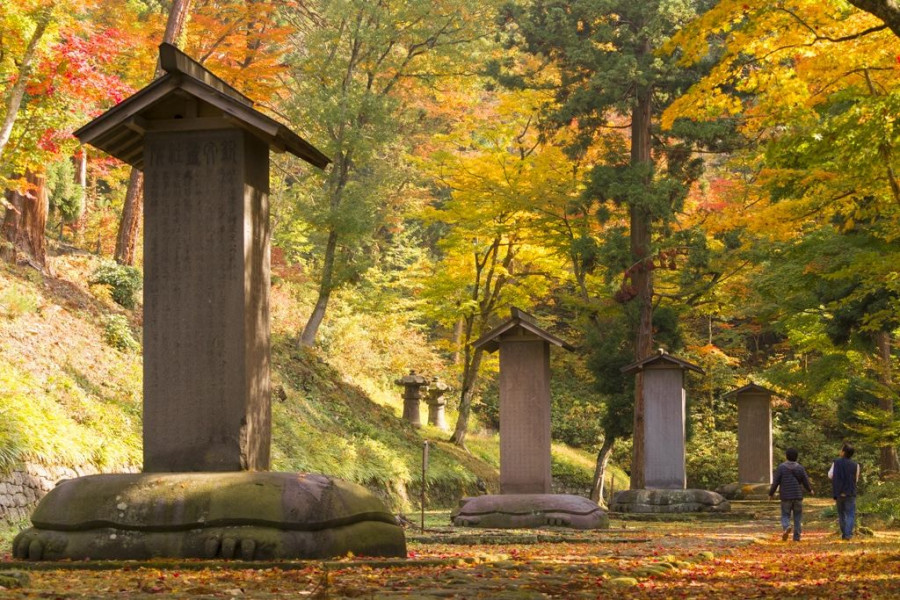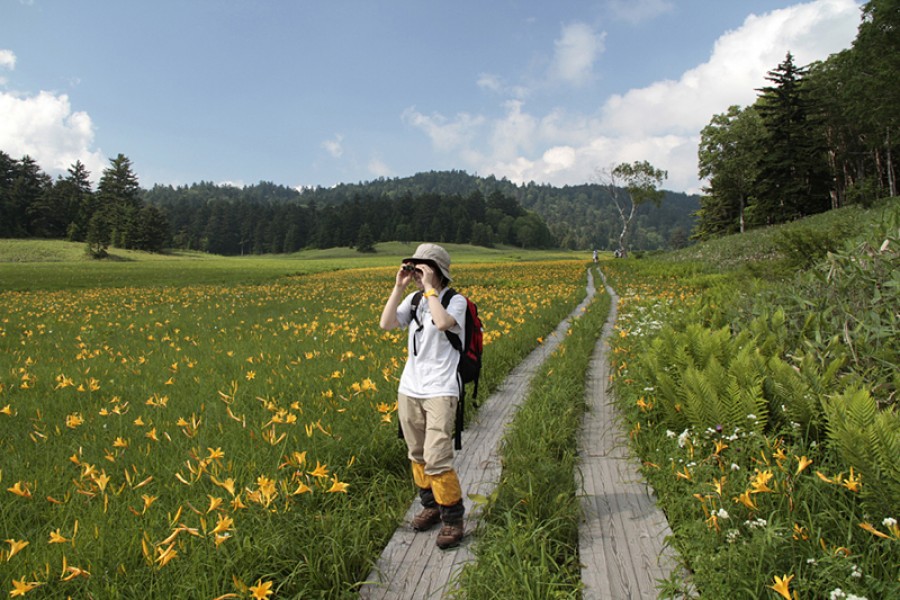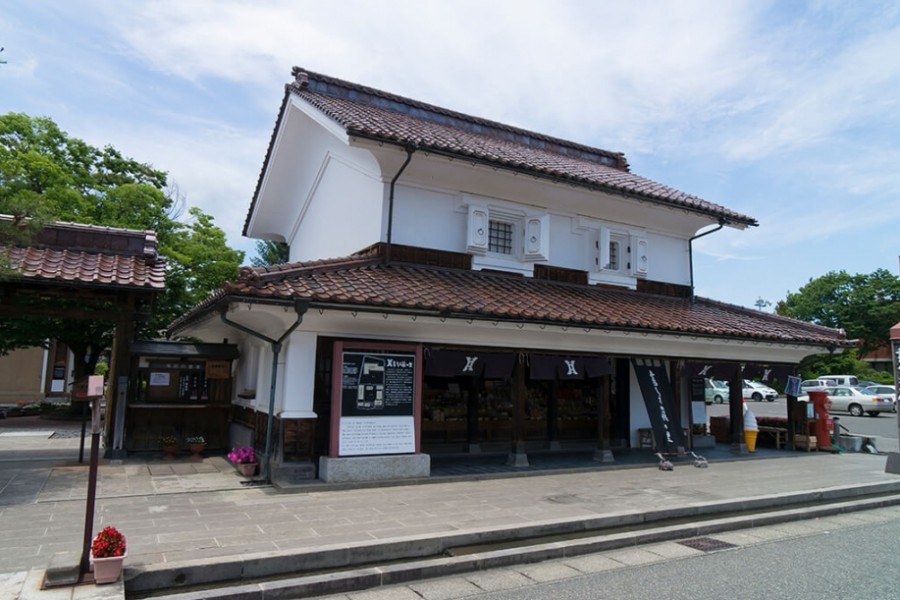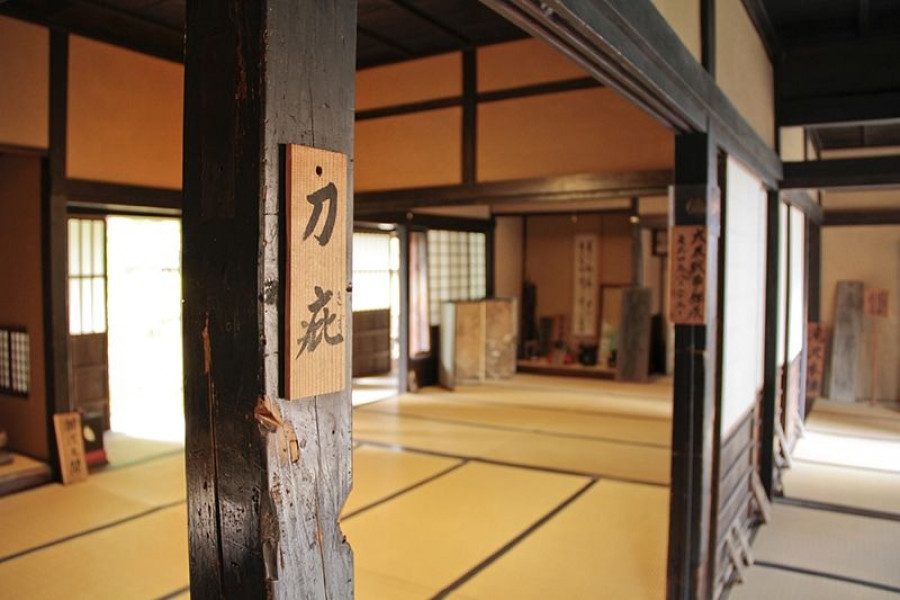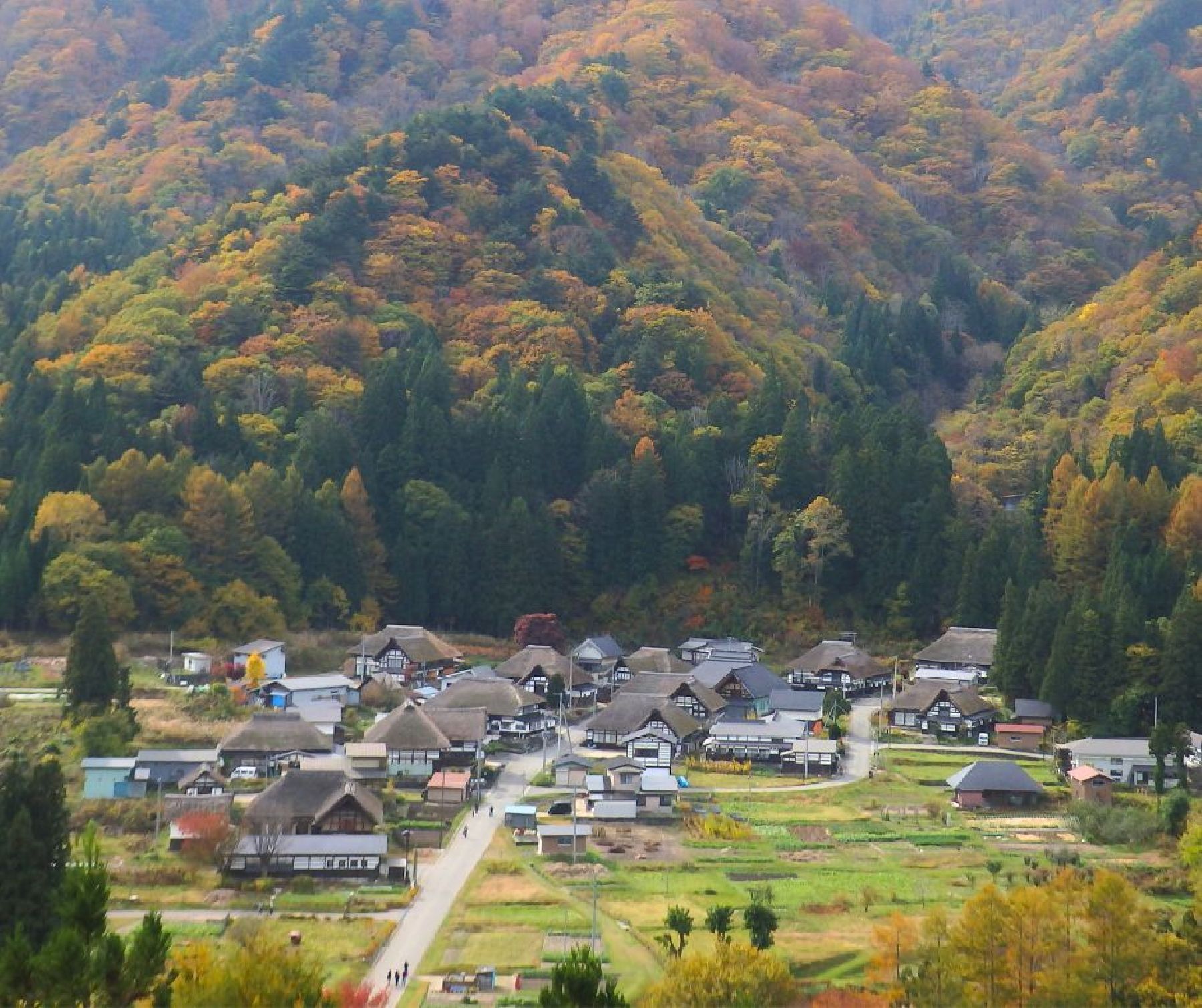Oyaku-en was used approximately 600 years ago as a villa for the then lord of the Aizu Domain. Subsequently, in the mid-17th century, the lord of the Aizu Domain started growing medicinal herbs within the grounds which he developed to protect the citizenry from epidemics. This lead to the garden gaining the name "Oyaku-en", which literally means "medicinal garden."
The traditional garden has been preserved as it was long ago, and Oyaku-en has now been designated as an important national asset. The buildings within the grounds were used by the lord as a place of relaxation and for entertainment. Accordingly, Oyaku-en still contains buildings devoted to Japanese tea.
Many visitors choose to drink green tea, served by the staff, on the benches by the pavilion, looking out over the still waters and the flocks of ducks that make their home here.
Oyaku-en is also well-known as a popular autumn colour spot, with several trees turning a vibrant yellow in mid-November. The garden is a short distance from Tsurugajo Castle, making for an excellent combination for visitors wanting to learn more about Aizu's rich samurai history. The two sites also happen to be the grounds for one of the Aizu region's best winter sights, the Aizu Painted Candle Festival.


